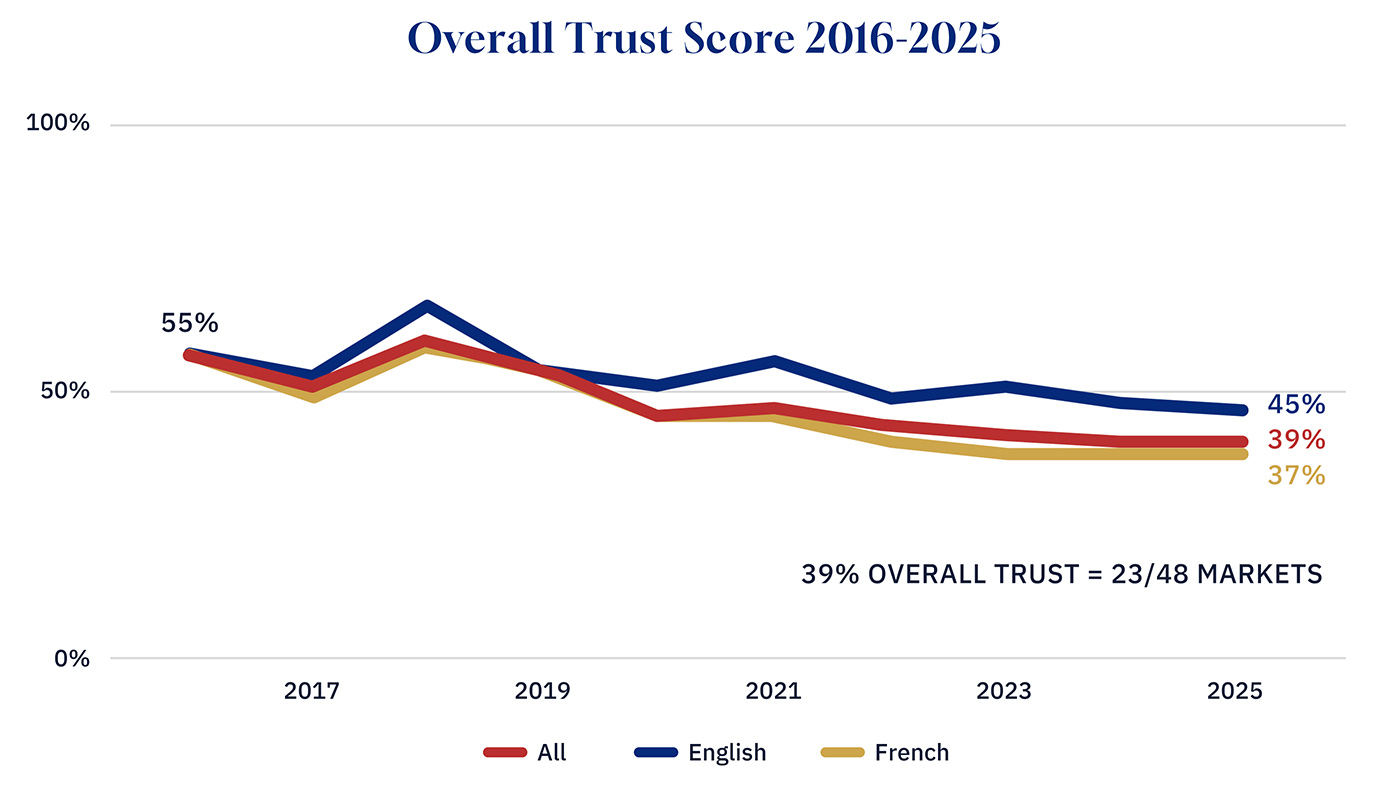Maybe you’re like me and have been waging a silent but futile war against “AI Overviews” or the concise summaries Google provides us each time we search the web. When Google first introduced this feature in its ubiquitous browser (they handle 90 percent of all web searches in Canada) in autumn 2024, I passively resisted. I insisted to myself that there was a value in skipping the AI Overview and browsing the suggested links to find the information I wanted. I was convinced this would provide me with more diverse information and work my mental muscles as I synthesized competing facts and narratives and assessed each source individually.
Flash forward nine short months, and to be honest, I’ve pretty much capitulated to Google’s AI Overview search overlord. It’s fast and usually provides me with the couple of key data points I was looking for. The upshot is I have mostly stopped clicking on site links, which the placement of AI Overview at the top of Google’s search page has cast into the digital purgatory of content you have to scroll to find.
And it is not just me whose searching and web behaviour has changed. AI Overview is having a major impact on the Internet. According to recent studies, AI summaries have reduced website traffic by 30 to 70 percent, depending on the search term. Even more mind-blowing, upwards of 60 percent of all Google searches are now termed “zero-click,” or the user never leaves the Search Engine Results Page (SERP). Pause, and think on that for a moment.
It is an interesting thought experiment to imagine the Internet we will soon have when most users no longer “discover” websites through the process of searching out links. It will likely be less spontaneous and decentralized as an information source. But it could also be more accurate, relevant, and useful. Whatever the pros and cons, it will be different because of a radical change in its underlying economics.
Like many parts of the economy, the internet upended previous business models and created new ones, online news included. The superpower of the new business models of Web 1.0 was their ability to monetize web visitors by running ads against the content users wanted or needed. Create great content, attract users, monetize your web visitors, and then rinse and repeat. Volia, whole new industries were created, including an all-digital future for news!
This virtuous circle is coming to a shuddering halt with the introduction of AI Overview, especially for the news industry. Data shared by Mail Online, the eighth-largest English language news site in the world, indicates click-through rates (CTRs) from Google are down by over 50 percent when AI Overview is available to the user versus when it is not. Unsurprisingly, the news industry writ large is reporting big overall drops in website traffic for many well-known titles since Google’s introduction of AI Overview.
AI Mode will kill search referral
So far, Canadian news websites seem to be faring better than their U.S. counterparts, but we are six months behind on the AI Overview adoption curve. We are also soon likely to be treated to the rollout of Google’s AI Mode. The next evolution of AI-powered search, AI Mode merges ChatGPT’s prompt functionality with Google’s near real-time, all-encompassing search.
From what we have experienced testing a beta version of AI Mode at The Hub (currently only available in the U.S.), it should terrify the news industry execs.
AI Mode does a few things really, really well. First, your search generates a more concise, focused version of AI Overview. This is annotated with sources you can link out to (which users do, but at a much lower rate than inside a traditional SERP). Where AI Mode really shines is that its summaries are based on close to real-time information in terms of what Google is scraping from the web, including news sites.
The result is that for any current events search, it effectively produces a news summary without the user having to click out to another site. Some news groups are indicating that it can do this for anything that has been reported anywhere in the last 10 minutes or less. Google seems to already understand how AI Mode is itself a kind of journalistic product by ending our sessions with the helpful enjoiner: “Stay informed through reliable news sources for the most up-to-date information.”

Example of AI Mode’s treatment of Pierre Poilievre’s recent Stampede speech.
Unfortunately for U.S. users, AI Mode’s “reliable news sources” turns out to be a predictable list of centre-left, mainstream news outlets, with the BBC, CNN, the New York Times, and the Washington Post overwhelmingly more likely to be cited than independent, smaller media, let alone centre-right sources. Our non-scientific testing at The Hub indicates a similar pattern in Canada, with mainstream media like CTV and CBC dominating the citations for most AI Mode news type searches. Independent outlets are noticably absent.
AI and the future of news
So where does this all leave us? Google’s dominance of search and laser-like corporate focus on rolling out AI as the value proposition for users of its browser all point to a serious near-term crisis for the news industry in Canada on par with the end of classified ads.
CTRs will continue to fall, likely precipitously, when AI Mode is fully rolled out in the coming months. Until recently, Google referrals have made up 50 percent of most news sites’ traffic. It’s not hard to imagine this going to 25 percent and lower (organic CTRs are already down more than 50 percent with AI Overview), effectively halving digital ad revenues, which currently generate half of most news outlets’ total revenues.
Given total digital ad sales in Canada by the news media are as much as $14 billion annually, the ultimate losses in revenue from the paradigm shift in search that is underway are likely orders of magnitude greater than the hundreds of millions of dollars in annual government (and Google) subsidies for the industry.
The losses are potentially so large that indemnifying the news industry would result in its effective nationalization and untenable status as a ward of the state. In sum, more government largesse isn’t the answer to what news outlets will soon face.
Instead, the arrival AI Overview, and soon AI Mode, should be seen as the latest object lesson that the news industry in Canada needs to become something else than what it currently is: a slow moving, state subsidized, non-innovative, and demonstrably under-performing series of legacy outlets (just look at the most-recent public trust scores).

Source: Reuters Institute. This data represents the overall trust in the news.
Graphic Credit: Janice Nelson.
Yes, in this brave new world of AI-powered news synthesis and distribution, the news industry will be much smaller. On a net basis, jobs will be lost. But the advent of AIs as go-to news aggregators also opens up a whole new set of exciting possibilities for solo journalists and independent news outlets as the industry finally moves on from a long past “golden age” of journalism and its “end-to-end” solution for news generation and distribution.
News creation in the era of AI will be a “jump ball”. Individuals and groups that generate news that people want and need (likely using AI tools themselves) will be financially rewarded including by the likes of Google (which is already funding Canadian news outlets under the Online News Act).
Necessity, as the saying goes, is the mother of invention.
Rather than “killing” journalism, AI-powered news distribution could end up saving news by prompting a much-needed burst of innovation and genuine competition. Here at The Hub, we are enthusiastic about the AI-inspired news revolution. The reality is there’s not a moment to waste in reimagining an industry and a public good that has been frozen in place for far too long. Let’s get to work.









